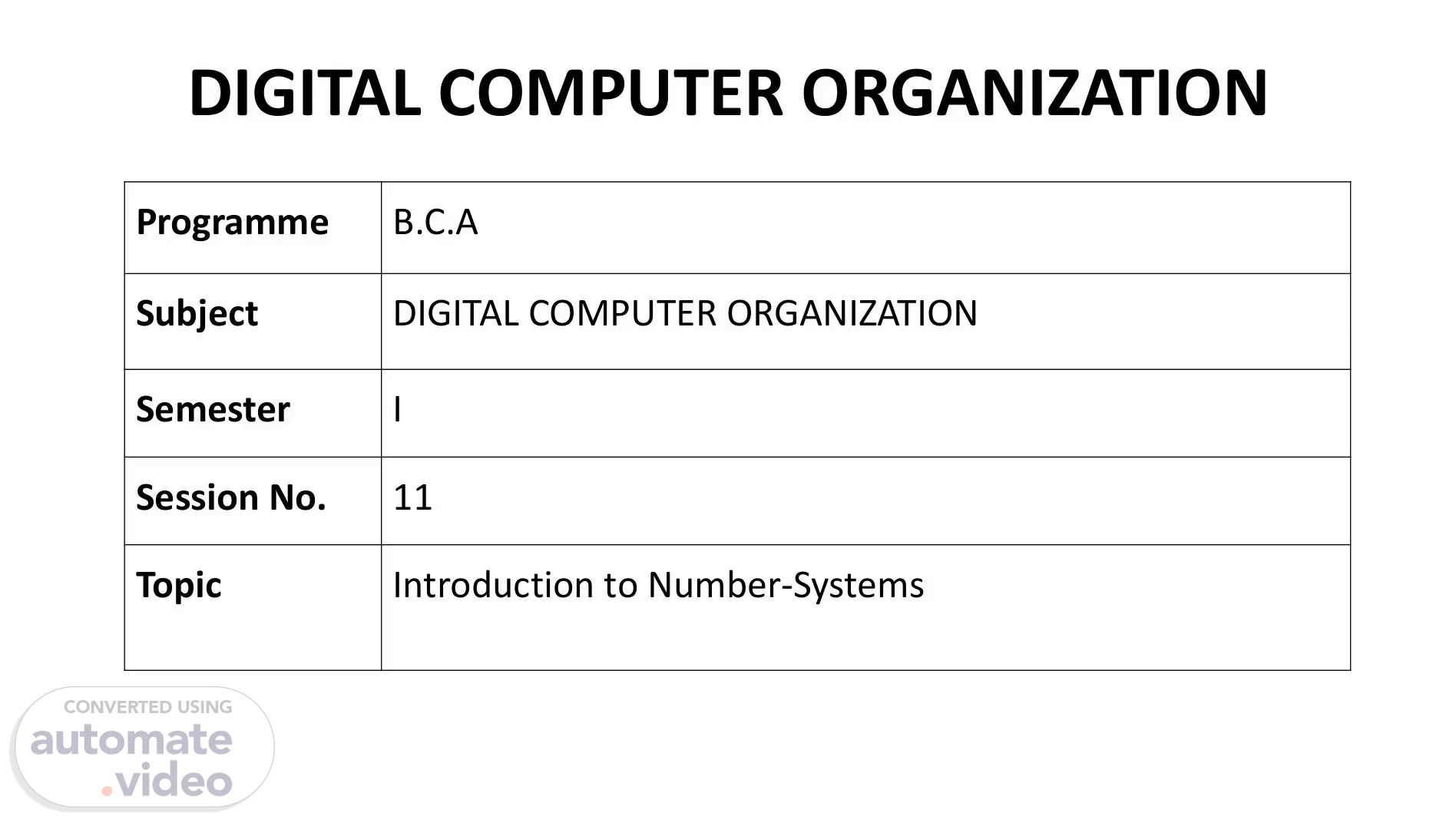Scene 1 (0s)
[Virtual Presenter] DIGITAL COMPUTER ORGANIZATION Programme B.C.A Subject DIGITAL COMPUTER ORGANIZATION Semester I Session No. 11 Topic Introduction to Number-Systems.
Scene 2 (16s)
[Audio] Number Systems A number-system is a method of representing numbers using digits or symbols. Two types of number systems: 1) Non-Positional Number System 2) Positional Number System.
Scene 3 (31s)
[Audio] Non-Positional Number Systems Use fixed symbols (e.g., I = 1, II = 2, III = 3, etc.) Value does not depend on position Example: IIII = 4 Limitations: → Difficult for arithmetic operations → Not suitable for digital systems.
Scene 4 (55s)
[Audio] Positional Number Systems Value depends on: 1) The digit 2) The position of the digit 3) The base of the number system Common Types: 1) Binary (Base-2) 2) Octal (Base-8) 3) Decimal (Base-10) 4) Hexadecimal (Base-16).
Scene 5 (1m 16s)
[Audio] Decimal Number System (Base-10) Uses 10 digits: 0 to 9 Each digit's position is a power of 10 Widely used in everyday life Example: 4257 = (4×10³) + (2×10²) + (5×10¹) + (7×10⁰).
Scene 6 (1m 39s)
[Audio] Binary Number System (Base-2) Uses 2 digits only: 0 and 1 Position is based on powers of 2 Used in digital electronics and computers Example: 10001₂ = (1×2⁴) + (0×2³) + (0×2²) + (0×2¹) + (1×2⁰).
Scene 7 (2m 1s)
[Audio] Octal Number System (Base-8) Uses 8 digits: 0 to 7 Position is based on powers of 8 3 binary bits can represent 1 octal digit Example: 141₈ = (1×8²) + (4×8¹) + (1×8⁰).
Scene 8 (2m 22s)
[Audio] Hexadecimal Number System (Base-16) Uses 16 digits: 0–9 and A–F (A=10, B=11, ..., F=15) Position is based on powers of 16 4 binary bits represent 1 hex digit Example: 7B3₁₆ = (7×16²) + (11×16¹) + (3×16⁰).
Scene 9 (2m 47s)
[Audio] Comparison of Binary, Octal, Decimal & Hexadecimal Number Systems.
Scene 10 (2m 55s)
[Audio] Thank You. Thank You.
